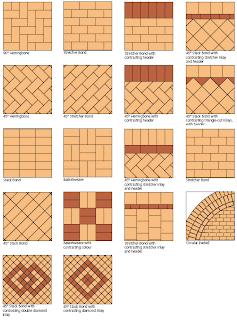 |
Lawns are popular because they provide a green cover that is hard wearing, ascetically pleasing, and suitable for both walking over and playing on. There are many different species of grass seed and each has its own characteristics that can suit most garden conditions. But if you don’t want a grass lawn but still want to use plants - what are the alternatives?
Grass is low growing and has lateral shoots which makes the sward thick. Because the root zone can produce grass shoots at such a low height, it can be mowed frequently without detrimental effect. Cricket wickets successfully rely on the root zone of the grass to hold the soil together because the grass blade is mown so short.
Plants that mimic this low growing, prostrate habit work well as alternatives to grass. They include herbs such as chamomile, pearlwort and thyme; ground cover plants and some plants traditionally considered lawn weeds.
The advantage of using alternatives to grass is that they can grow in areas that would be difficult to mow. However, often these plants are not as hard wearing as grass and so not suitable for playing sports on or high use areas.
Herbs
Camomile lawns were popular in the formal gardens of the fifteenth and sixteenth centuries, and have rosettes of fine, scented leaves which are tolerant of some walking or sitting on. Not only are the cool to the foot, they release a gorgoes, relaxing perfume as you walk over it. Use the non flowering variety, Anthemis nobile 'Treneague'. As they are non-flowering, the plants will not produce seed. This means that a new lawn will have to be planted from rosettes.
 |
| Thyme lawn |
Creeping mint, Mentha requienii, is good for shady areas.
Ground cover planting
The advantage of using ground cover plants is that they can be planted on steep banks or areas inaccessible to mowers. Ajuga reptans, Vinca minor, Pachysandra terminalis or hedra helix are all low growing ground cover plants that will provide excellent cover in shady areas. Achillea tomentosa and Acaena microphylla are great for sunny areas.
Lawn weeds
Moss can provide excellent ground cover and thrives in shady and damp areas. Keep weed free and water in dry spells.
 |
| Clover lawn |
Sagina pilifera, pearlwort, provides a spongy carpet with white flowers. It should be planted in well drained soil in partial shade. Better suited to small areas of lawn.
For related articles click onto:
Grass maintenance - laying turf
Grass maintenance - sowing a lawn from seed
History of the lawn
How to build a cold frame
How to make compost
Lawn care
Manuring
Weeding
Non-grass lawns
Paths - Brick paving
Preparing a seed bed
Potagers
Soil structure
Using pedestrian mowers



























